Free 7 Day Southern Italy Itinerary Template
7-Day Southern Italy Itinerary
Hello there, I'm [YOUR NAME]. I am beyond thrilled you've chosen to explore the irresistible charm of Southern Italy with us. As we wind our way through ancient cities, savor exquisite cuisine, and marvel at landscapes crafted by history, you will discover why this region has captured the hearts of many. Rest assured, this is not just a trip. It's an experience that will linger in your memories long after you’ve returned home.
Day 1: Arrival in Naples
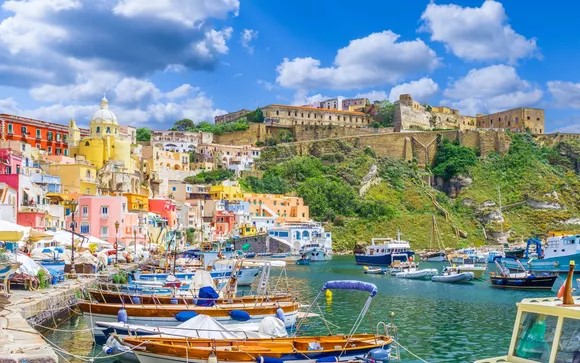
|
Welcome to Naples, the vibrant gateway to Southern Italy. After settling into your hotel, we'll embark on a sunset tour of the city's historic center - a UNESCO World Heritage Site - where architectural treasures abound. Dinner will comprise local delicacies, including the world-famous Neapolitan pizza. Naples is a historic city located in the southern part of Italy, in the region of Campania. It is one of the largest and oldest cities in Italy, known for its rich cultural heritage, vibrant street life, and delicious cuisine. Here are some key aspects of Naples:
Overall, Naples offers visitors a fascinating blend of history, culture, and culinary delights, making it a must-visit destination in Southern Italy. |
Day 2: Pompeii and the Amalfi Coast
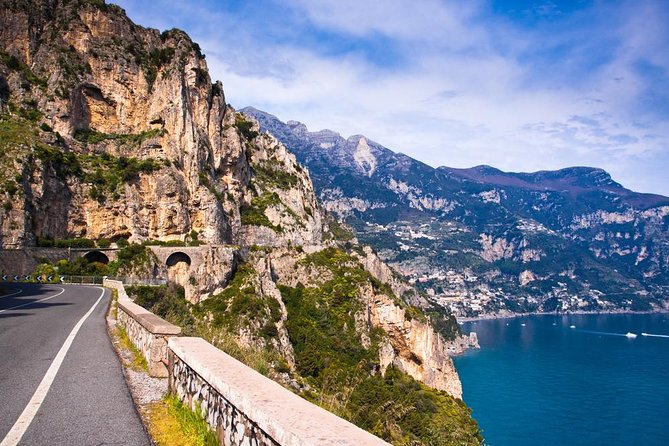
|
On day two, we delve into the past with a visit to the archaeological sites of Pompeii and Herculaneum, eerily preserved by the infamous eruption of Mount Vesuvius in 79 AD. Post lunch, we'll drive along the sultry Amalfi Coast, culminating the day with a serene sunset view. Pompeii and the Amalfi Coast are two iconic destinations in Southern Italy, both known for their stunning natural beauty, rich history, and cultural significance. Pompeii:Location: Pompeii is located near the modern city of Naples, in the Campania region of Italy. History: Pompeii was an ancient Roman city that was buried under volcanic ash and pumice when Mount Vesuvius erupted in 79 AD. The city remained largely preserved under layers of ash, providing a remarkable glimpse into daily life in the Roman Empire. Excavations of Pompeii have revealed well-preserved buildings, streets, artwork, and even the remains of inhabitants, frozen in time. Attractions: Visitors to Pompeii can explore the ancient ruins, including the Forum, the Amphitheater, the Villa of the Mysteries, and the House of the Faun. The site offers a fascinating insight into ancient Roman civilization and the effects of the catastrophic eruption. The Amalfi Coast:Location: The Amalfi Coast is a picturesque stretch of coastline along the southern edge of the Sorrentine Peninsula, in the Campania region of Italy. Scenery: The Amalfi Coast is renowned for its dramatic cliffs, turquoise waters, and charming coastal villages. The rugged coastline is dotted with colorful towns clinging to the cliffs, offering breathtaking views at every turn. Towns: Some of the most popular towns along the Amalfi Coast include Amalfi, Positano, Ravello, and Sorrento. Each town has its unique character and attractions, from medieval cathedrals and Moorish architecture to artisan shops and Michelin-starred restaurants. Activities: Visitors to the Amalfi Coast can enjoy a variety of activities, including scenic drives along the coastal road, hiking along ancient footpaths like the Path of the Gods, relaxing on beautiful beaches, and exploring historic landmarks such as the Cathedral of Amalfi and Villa Rufolo in Ravello. Both Pompeii and the Amalfi Coast offer unforgettable experiences for travelers, whether they're interested in ancient history, breathtaking scenery, or simply soaking up the Mediterranean lifestyle. |
Day 3: Capri
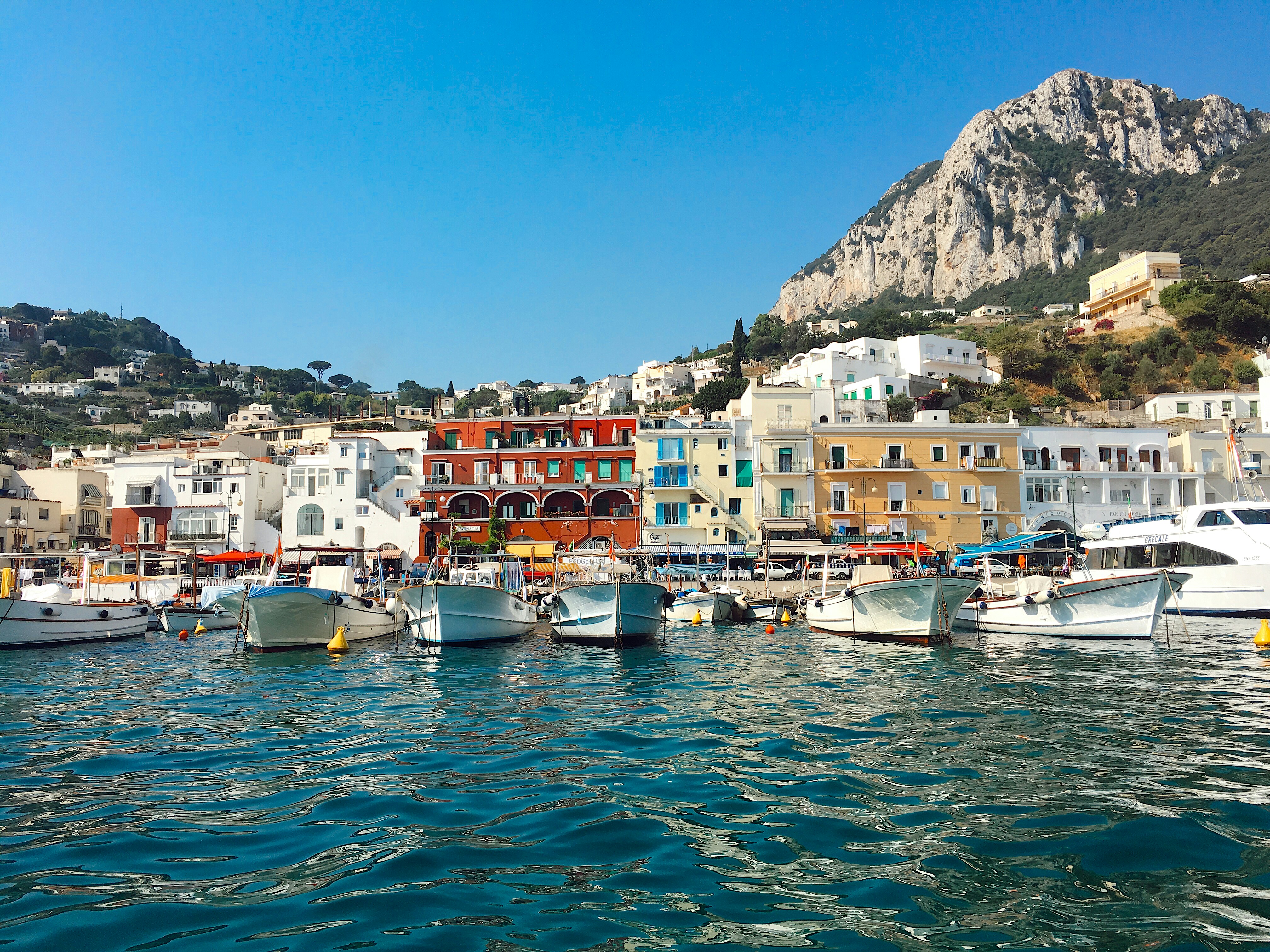
|
Day three welcomes you to the glamorous island of Capri. We'll explore the Blue Grotto, a shimmering sea cave, visit the radiant Gardens of Augustus, and wander through the designer shops and chic cafes of Capri town before returning to Naples. Capri is a stunning island located in the Tyrrhenian Sea off the Sorrentine Peninsula, on the south side of the Gulf of Naples in Italy. It's renowned for its natural beauty, upscale atmosphere, and historical significance. Here's more about Capri: Geography and Landscape:
Attractions and Landmarks:
Lifestyle and Tourism:
Accessibility:
Overall, Capri is a jewel of the Mediterranean, offering visitors a perfect blend of natural beauty, history, and luxury. |
Day 4: Travel to Apulia
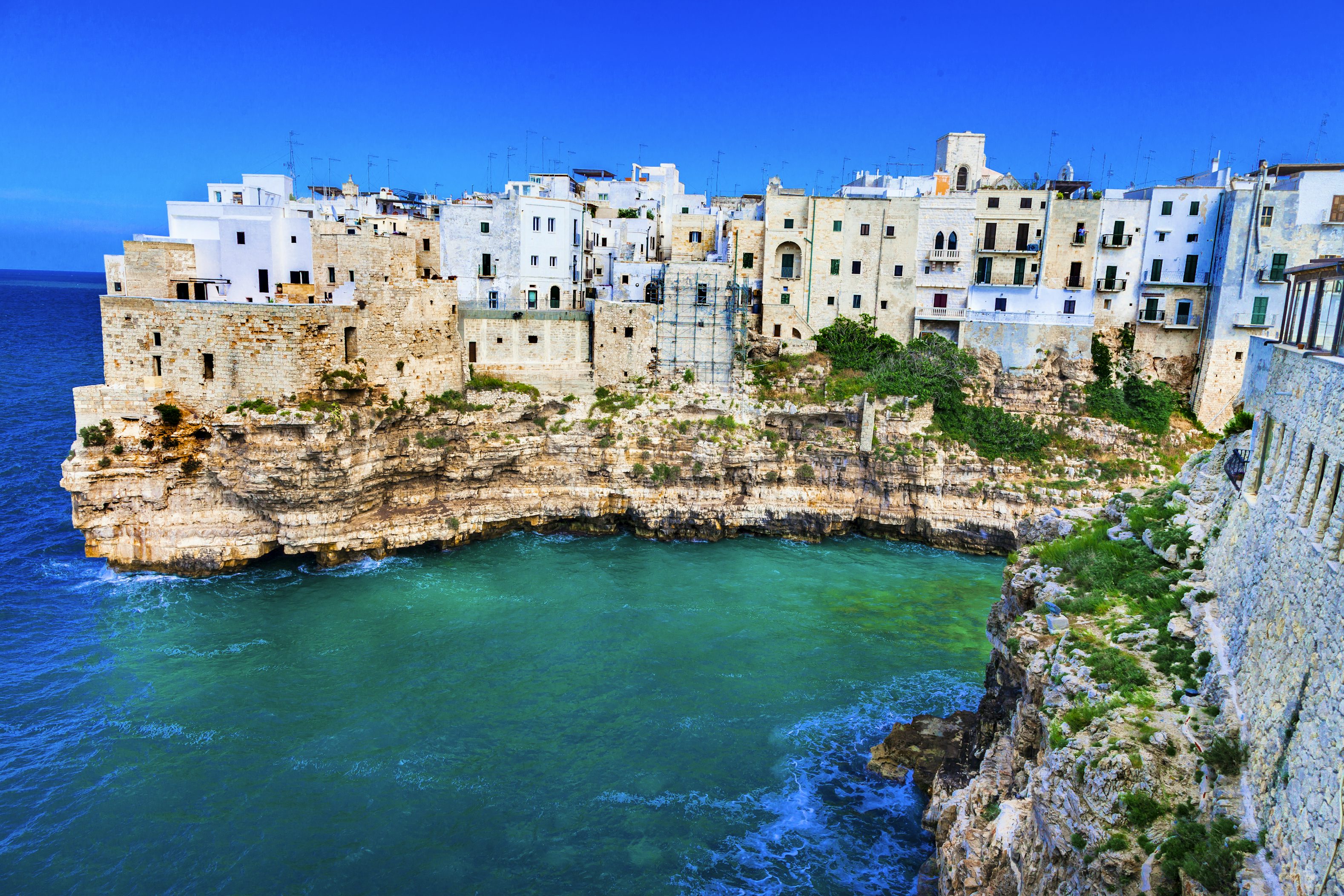
|
We'll begin our journey east to the region of Apulia, famous for its whitewashed towns and pristine beaches. The day concludes with a traditional Orecchiette dinner, a quintessential food experience in this part of the country. Apulia, also known as Puglia in Italian, is a region located in the southeastern part of Italy, forming the "heel" of the Italian "boot." It is bordered by the Adriatic Sea to the east, the Ionian Sea to the southeast, and encompasses the Salento Peninsula. Here are some key aspects of Apulia: Geography and Landscape:
Culture and History:
Attractions and Landmarks:
Activities and Outdoor Adventures:
Accessibility:
Apulia is a hidden gem of Italy, offering visitors a unique blend of history, culture, natural beauty, and culinary delights. Whether you're interested in exploring ancient ruins, relaxing on sandy beaches, or indulging in delicious cuisine, Apulia has something to offer for every traveler. |
Day 5: Discovering Lecce, the ‘Florence of the South’
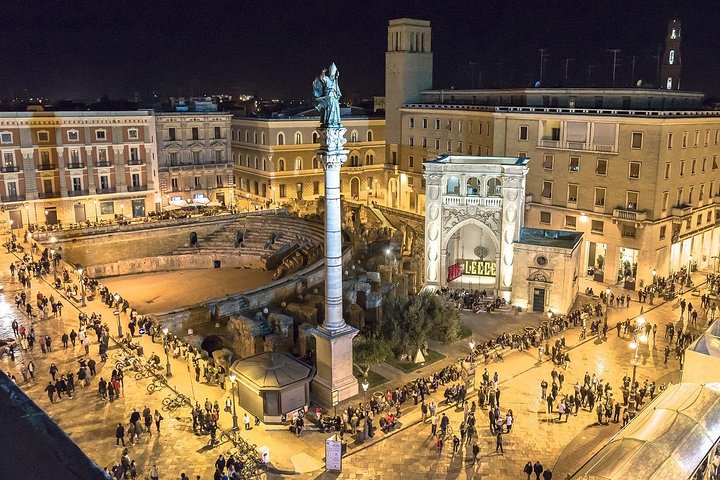
|
Our fifth day is crowned with a walking tour of Lecce, adorned with opulent Baroque architecture. We'll visit the mesmerizing Basilica di Santa Croce and tour Piazza del Duomo. Indulge in a mouth-watering dinner featuring Lecce's sensational culinary offerings. Lecce is a historic city located in the region of Apulia (Puglia) in Southern Italy. Often referred to as the "Florence of the South" due to its rich Baroque architecture, Lecce is renowned for its ornate churches, elegant palaces, and charming streets. Here's more about Lecce: History and Culture:
Architecture and Landmarks:
Cuisine:
Arts and Crafts:
Tourism:
Overall, Lecce is a captivating destination that offers a perfect blend of history, culture, and culinary delights, earning it the nickname "Florence of the South." |
Day 6: Bari and Matera
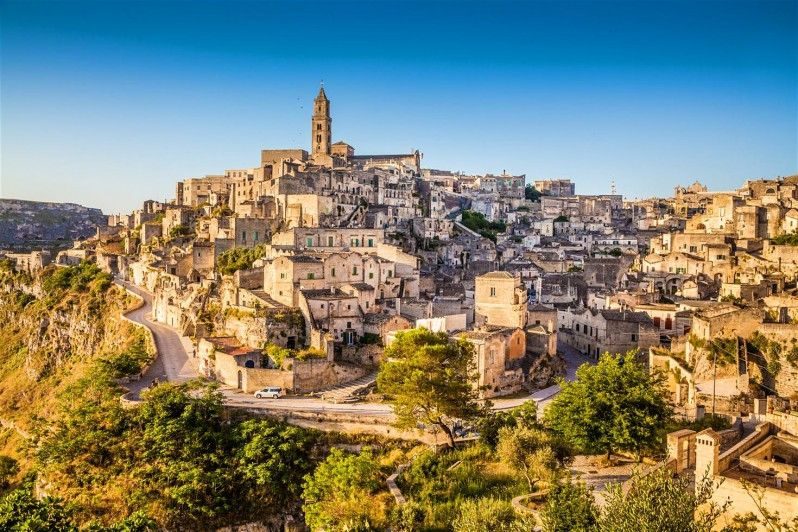
|
Day Six takes us through the charming city of Bari, where we'll visit age-old churches and bustling piazzas. Following a lovely lunch, we'll head off to Matera, a prehistoric town known for its unique cave dwellings, the Sassi. Bari and Matera are two fascinating cities located in the southern region of Italy, specifically in the region of Apulia (Puglia) and Basilicata, respectively. While they are both steeped in history and culture, they offer distinct experiences for visitors. Bari:Location and Overview:
Attractions:
Cuisine:
Matera:Location and Overview:
Attractions:
Cuisine:
Both Bari and Matera offer rich cultural experiences, stunning architecture, and delicious cuisine, making them must-visit destinations in Southern Italy. |
Day 7: Departure
|
On day seven, our magnificent journey through Southern Italy will draw to a close, but it will leave us with a treasure trove of unforgettable memories. As we awaken for our final day in this enchanting region, we'll indulge in one last traditional Italian breakfast, savoring the flavors of freshly baked pastries, aromatic espresso, and perhaps some local fruits or cheeses. With our hearts still brimming with the charm and beauty of Southern Italy, we'll embark on our journey to the airport. Along the way, we'll reflect on the incredible experiences we've shared throughout our trip – from wandering the ancient streets of Naples and Pompeii to marveling at the breathtaking vistas of the Amalfi Coast and the enchanting allure of Capri. As we bid farewell to this remarkable region, we'll carry with us not only the photographs and souvenirs but also the warmth of the Italian hospitality we've encountered, the rich tapestry of history and culture we've immersed ourselves in and the friendships we've forged along the way. Though our time in Southern Italy may be coming to an end, the memories we've created will endure, serving as a reminder of the beauty and magic that await us in every corner of the world. And who knows? Perhaps one day we'll return to this captivating region to write new chapters in our travel story. |
I hope you're as excited as I am to embark on this incredible adventure. If you have any questions or need further information, feel free to contact me at [YOUR EMAIL]. Also, don't forget to check out more exciting itineraries on our website, [YOUR COMPANY WEBSITE].